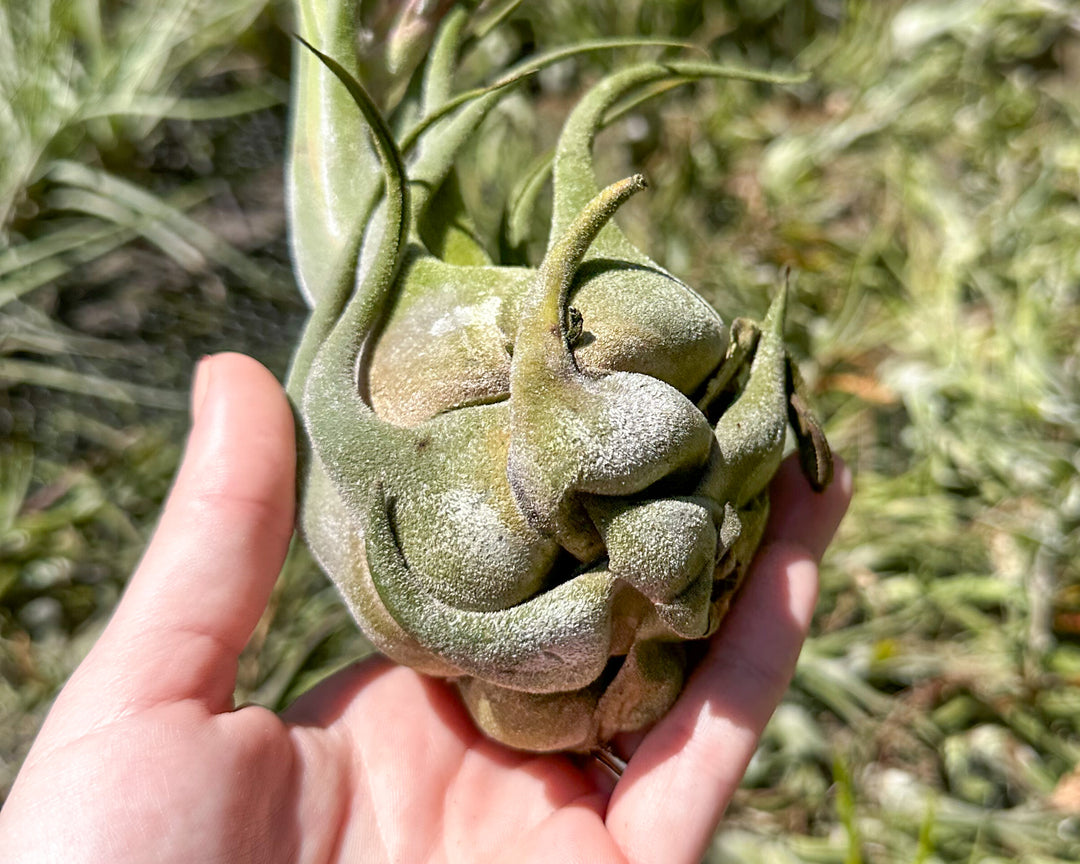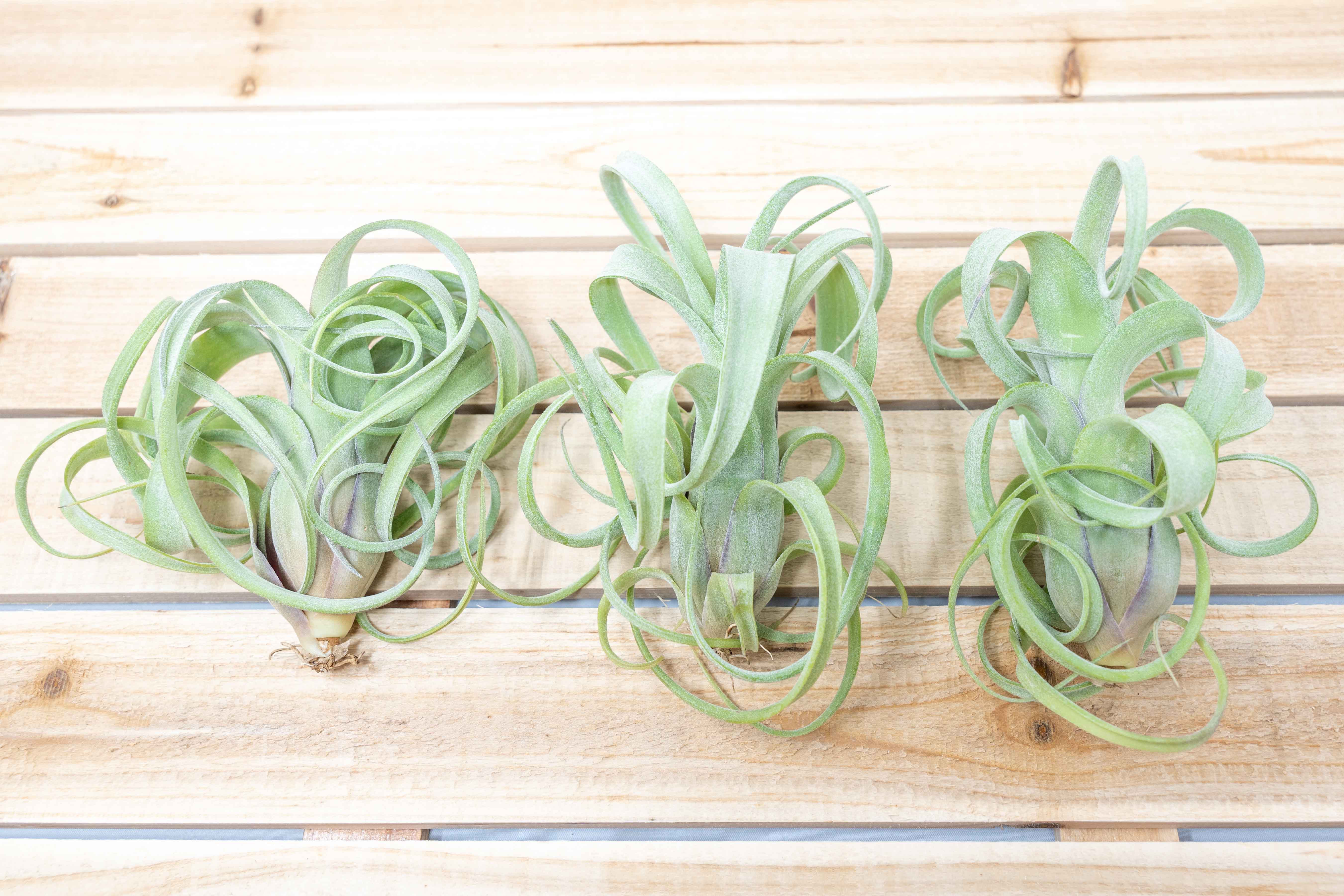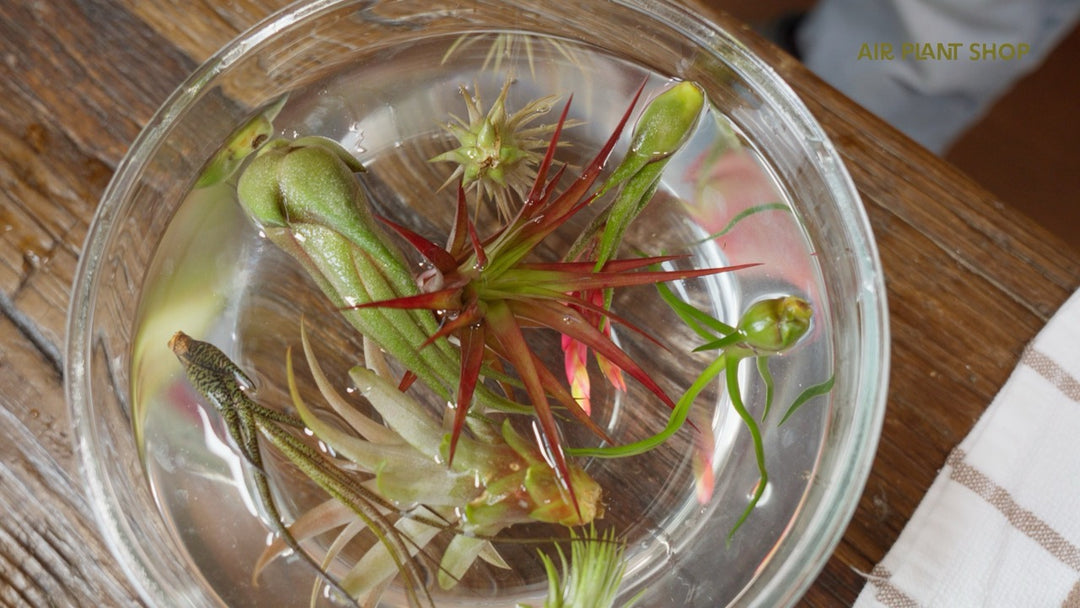
Air Plants With Brown Bases: How to Tell What's Normal and What's Not
When you receive your fresh batch of Tillandsia air plants, you might notice that some of them display a green appearance throughout, while others appear to have a brownish tinge towards their lower parts. While this could understandably raise some concerns, rest assured that a darker base doesn't necessarily spell doom for your plant's health! In fact, for several types of air plants, having brown bases is perfectly normal and healthy. If you find yourself unsure about the state of your air plant, fear not, there are ways to distinguish between what's perfectly natural and what might indicate an unhealthy plant.

Distinguishing a Normal Base from Rot

At first glance, it's easy to associate the darker coloring at the base of your air plant with rot, a common issue among air plants often caused by overwatering, insufficient light, or poor air circulation. A rotting plant typically exhibits a dark brown or black base. However, the best way to determine the health of your plant is by gently tugging or wiggling the center leaves from the top. In a healthy air plant, the leaves will remain firmly attached. If the plant is indeed rotting, the center leaves will come off easily, and the plant may even fall apart. Another indicator of rot is a soft and soggy base. The bases of air plants should never feel mushy.
It's worth noting that some air plants have brown organic matter that can accumulate between the bottom leaves. This is particularly common among Xerographica, Streptophylla, and Juncea (as seen in the image on the right) air plants that have spent a considerable amount of time on the farm. This is perfectly normal, and any excess dirt can be gently removed from between the leaves.
Unique Textures and Blushing Cycles

Tillandsia air plants come in a wide variety, each with its unique characteristics. While most houseplants have smooth, leafy textures, air plants exhibit remarkable diversity within their species. Unusual textures are often observed in Juncea, Melanocrater (as seen in the image on the right), and Fasciculata air plants, which feature brittle leaves and dry bases reminiscent of pinecones. These plants naturally sport brown, cone-shaped bases, which are perfectly healthy as long as they remain firm, and the leaves are intact. Bulbous air plants such as Bulbosa Guatemala and Butzii have a distinct hard, shell-like texture, along with brown bases. Again, these bases are healthy when they maintain their firmness and leaf integrity.

As air plants grow and mature, they undergo various color cycles, often blushing with shades of red, pink, or purple. Some species even exhibit darker shades of purple during their blush phase, with colors ranging from the base to the leaf tips. Seleriana and Caput Medusae (as seen in the image on the right), for instance, commonly exhibit these dark blushing colors towards their bases, while Juncea and Filifolia plants tend to have darker shades at the ends of their wispy leaves. It's essential to understand that these different colors are unique traits that naturally occur in healthy air plants.
So, before jumping to conclusions about your plant's health based solely on its appearance upon arrival, give it some time to adapt to its new environment and care for it as you normally would! You'll likely find that these plants thrive, even with their peculiar brown bases.
If you still have air plants that you are unsure of or concerned about, check out our Air Plant Care page, “What’s Killing My Air Plants?” blog, or reach out to our customer service team at service@airplantshop.com.








Leave a comment